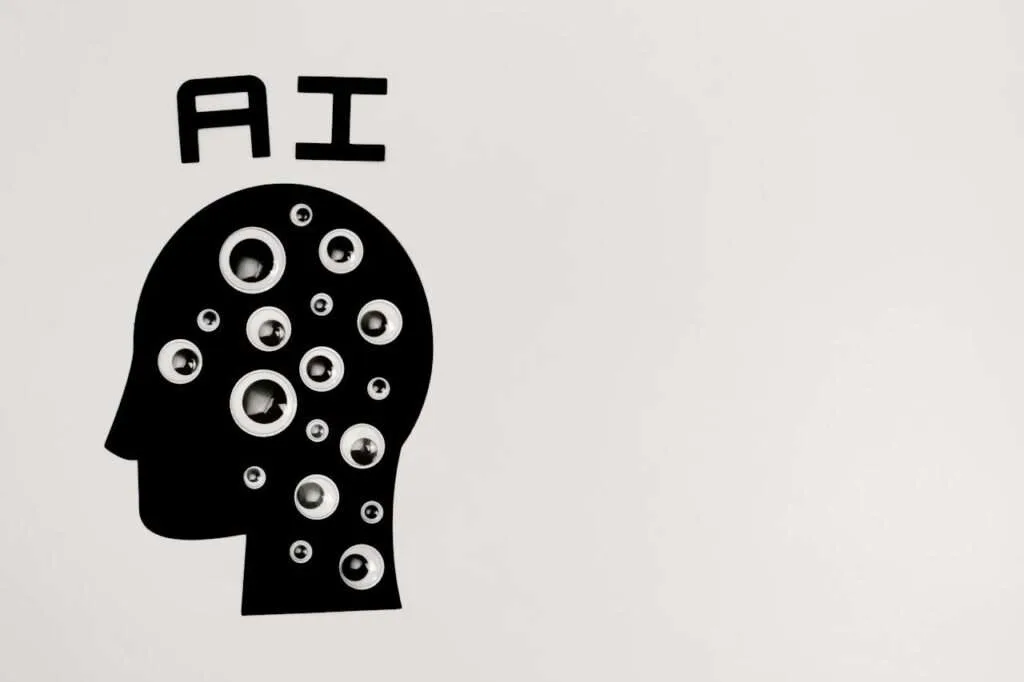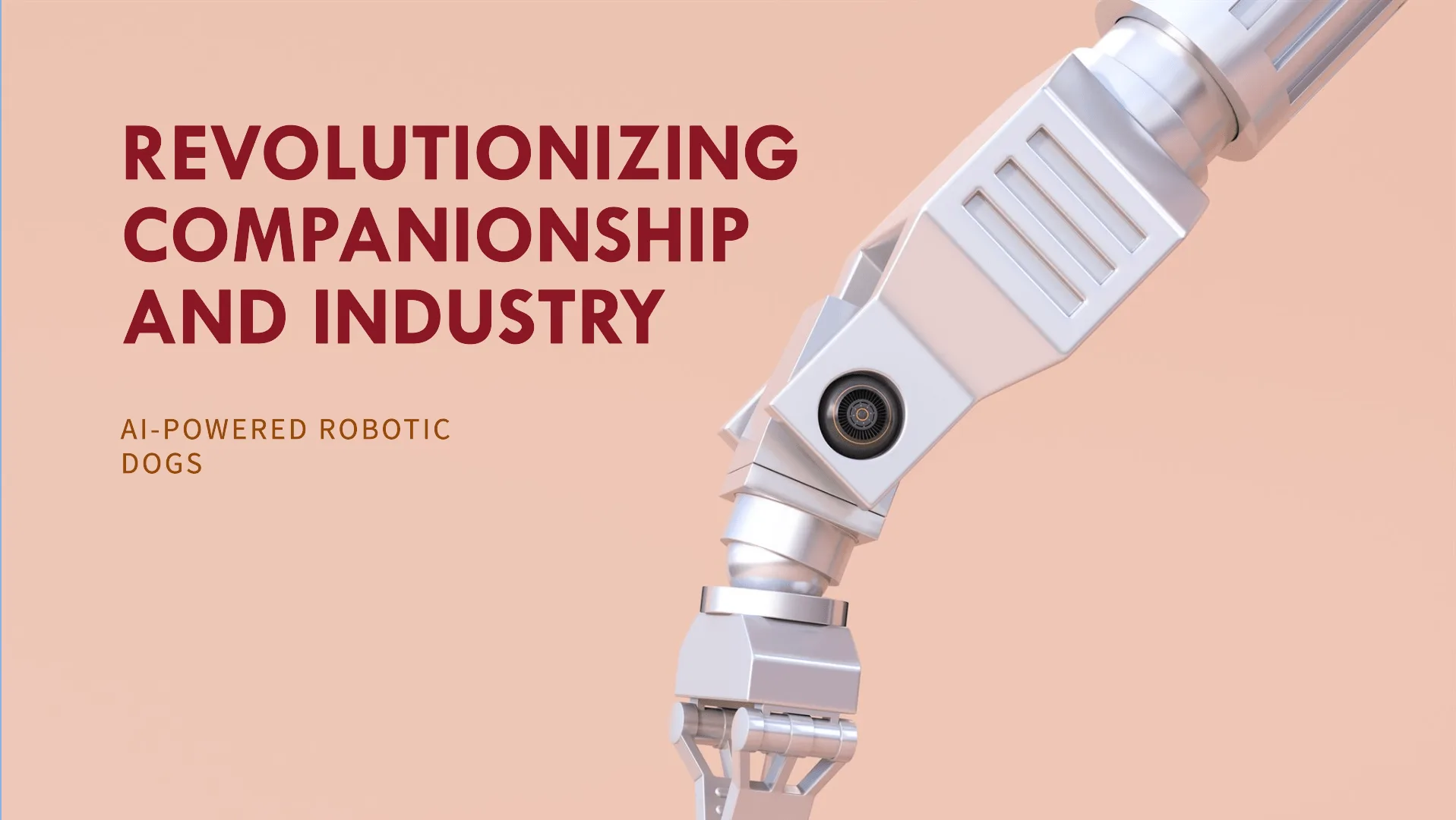Artificial Intelligence (AI) continues to redefine our world, and one of its most fascinating applications is in the development of AI-powered robotic dogs. These sophisticated machines blend advanced robotics with cutting-edge AI to create entities that not only perform tasks but also interact with their environment in remarkably lifelike ways. From search and rescue missions to providing companionship, AI-powered robotic dogs are becoming an integral part of various industries. This article explores the history, technology, applications, and ethical implications of these futuristic companions.
History of Robotic Dogs

The concept of robotic dogs isn’t new. Early attempts to create robotic pets date back to the late 20th century, with one of the most iconic examples being Sony’s Aibo, launched in 1999. Aibo was a groundbreaking product at the time, capable of basic interactions, recognizing its owner, and responding to voice commands. Although its AI capabilities were limited compared to today’s standards, it paved the way for future innovations.
As technology advanced, so did robotic dogs. The integration of AI, sensors, and improved mechanics transformed these machines from simple toys into sophisticated robots. By the 2010s, companies like Boston Dynamics began developing robotic dogs like Spot, which could navigate complex environments, perform tasks autonomously, and even collaborate with humans in challenging situations.
The Role of AI in Robotic Dogs
AI is the brain behind modern robotic dogs. While traditional robots followed pre-programmed instructions, AI-powered robotic dogs use machine learning algorithms to process data from their surroundings, make decisions, and adapt to new situations. This capability allows them to perform a wide range of tasks with minimal human intervention.
Machine Learning: One of the core aspects of AI in robotic dogs is machine learning, which enables these robots to learn from experience. For example, a robotic dog in a search and rescue mission can learn to identify obstacles and optimize its path over time, improving efficiency with each mission.
Computer Vision: AI-powered robotic dogs are equipped with cameras and sensors that allow them to “see” their environment. Through computer vision, these robots can recognize objects, people, and even specific emotions on human faces, making interactions more intuitive and natural.
Natural Language Processing (NLP): AI-driven robotic dogs can also understand and respond to human language. NLP enables them to interpret voice commands, understand context, and even engage in simple conversations, enhancing their role as companions.
Key Features of AI-powered Robotic Dogs

AI-powered robotic dogs come with an array of features that set them apart from traditional robots:
Autonomous Navigation: Using AI and advanced sensors, these robots can navigate complex environments without human guidance. They can avoid obstacles, climb stairs, and move across uneven terrain, making them highly versatile.
Object Recognition: With computer vision, robotic dogs can identify and interact with objects. This ability is crucial in applications like search and rescue, where the robot must locate specific items or people.
Interactive Capabilities: Unlike conventional robots, AI-powered robotic dogs are designed to interact with humans in meaningful ways. They can recognize their owner’s voice, respond to commands, and even adapt their behavior based on human emotions.
Real-time Data Processing: These robots continuously process data from their environment, allowing them to make decisions on the fly. Whether it’s navigating a busy street or responding to a distressed human, real-time data processing ensures they can act quickly and efficiently.
Popular AI-powered Robotic Dog Models
Several AI-powered robotic dogs have gained prominence, each offering unique features and capabilities.
Boston Dynamics’ Spot: Perhaps the most famous of them all, Spot is a versatile robotic dog designed for industrial applications. It can navigate difficult terrains, carry equipment, and even perform inspections in hazardous environments. Spot’s AI allows it to operate autonomously, making it invaluable in scenarios where human presence is dangerous.
Sony’s Aibo: Aibo remains a popular choice for those looking for a robotic pet. With AI-driven interactions, Aibo can recognize its owner, learn new tricks, and provide companionship. Its playful nature and lifelike movements make it a beloved member of many households.
Unitree Robotics’ Go1: A more affordable alternative, Go1 is a robotic dog designed for both personal and professional use. It offers autonomous navigation, object recognition, and can even be used for educational purposes, teaching students about robotics and AI.
How AI-powered Robotic Dogs Work

The inner workings of AI-powered robotic dogs are a marvel of modern engineering. These robots combine hardware and software in a seamless way to replicate the behavior of a real dog.
Sensors and Actuators: Robotic dogs are equipped with a variety of sensors, including cameras, lidar, and gyroscopes, which help them perceive their environment. Actuators, on the other hand, allow them to move. These components work together to enable the robot to walk, run, and even jump.
AI Algorithms: The real magic happens in the AI algorithms that process data from the sensors. These algorithms enable the robot to understand its surroundings, make decisions, and execute tasks. For example, if a robotic dog encounters an obstacle, its AI will calculate the best way to navigate around it.
Power Supply: Most AI-powered robotic dogs rely on batteries for power. Advances in battery technology have allowed these robots to operate for extended periods, but battery life remains a limitation in more complex tasks.
Communication Systems: To interact with humans and other devices, robotic dogs use wireless communication systems like Wi-Fi and Bluetooth. This allows them to receive commands from their owners, send data to central systems, and even collaborate with other robots.
Applications in Real-life Scenarios
AI-powered robotic dogs are more than just futuristic gadgets; they have practical applications across a variety of fields.
Search and Rescue Operations: Robotic dogs are increasingly being used in search and rescue missions. Their ability to navigate dangerous terrains, coupled with AI that can identify victims, makes them invaluable in disaster scenarios. For example, Spot has been deployed in earthquake-stricken areas to search for survivors.
Healthcare and Therapy: AI-powered robotic dogs are making a difference in healthcare settings. They are used in therapy for mental health patients, providing comfort and companionship. For elderly people, these robotic pets offer a sense of connection and can even assist with daily tasks.
Military and Law Enforcement: In the military and law enforcement, robotic dogs are used for surveillance, bomb detection, and reconnaissance. Their ability to operate in hazardous environments, where human presence would be risky, makes them ideal for these applications.
Companionship: Beyond industrial and professional uses, AI-powered robotic dogs are also popular as pets. They offer many of the benefits of a real dog without the responsibilities of feeding, walking, or dealing with allergies. For individuals who cannot care for a real pet, robotic dogs provide companionship and emotional support.
AI-powered Robotic Dogs in Search and Rescue Operations

Search and rescue operations are among the most critical applications for AI-powered robotic dogs. In situations where every second counts, these robots can go where humans cannot, quickly and efficiently.
Navigating Complex Terrains: Whether it’s an earthquake, landslide, or collapsed building, robotic dogs can navigate through rubble and debris to locate survivors. Their AI-driven navigation systems allow them to assess the safest and most efficient path.
Equipped with Sensors: These robotic dogs are equipped with sensors that can detect body heat, sounds, and even vibrations. This allows them to identify trapped victims who may be unconscious or buried under debris.
Communication Capabilities: Once a victim is located, the robotic dog can relay the information back to human rescuers in real-time. This communication is crucial for coordinating rescue efforts and ensuring that help arrives quickly.
Autonomous Operation: In many cases, robotic dogs operate autonomously, making decisions based on the data they collect. This reduces the need for human intervention and allows the robot to work continuously without breaks.
Robotic Dogs in Healthcare
The healthcare industry has found several innovative uses for AI-powered robotic dogs, particularly in therapy and caregiving roles.
Therapy for Mental Health: Robotic dogs are increasingly being used in therapy sessions for individuals with mental health issues. Their presence can provide comfort, reduce anxiety, and even help patients open up during counseling sessions. The AI in these robots allows them to respond to emotional cues, making them effective companions in therapeutic settings.
Assistance for the Elderly: For elderly individuals, especially those living alone, robotic dogs offer companionship and practical assistance. They can remind their owners to take medication, help them stay active, and provide a sense of security. Unlike real dogs, robotic dogs don’t require physical care, making them ideal for older adults who may have mobility issues.
Support for Physically Disabled Individuals: AI-powered robotic dogs can also assist individuals with physical disabilities. They can fetch objects, provide support for mobility, and even alert caregivers in case of emergencies.
Military and Law Enforcement Uses

In military and law enforcement, the utility of AI-powered robotic dogs is rapidly expanding. These robots are not just tools; they are becoming integral to operations in hostile and dangerous environments.
Surveillance: Robotic dogs equipped with cameras and sensors can patrol areas and provide real-time surveillance. Their AI allows them to detect unusual activities, identify threats, and report back to human operators.
Bomb Detection and Disposal: One of the most dangerous tasks in both military and law enforcement is dealing with explosives. Robotic dogs can be sent into potentially dangerous areas to detect and disarm bombs, reducing the risk to human personnel.
Reconnaissance: In situations where gathering intelligence is critical, robotic dogs can be deployed to scout locations and provide detailed information. Their ability to move quietly and avoid detection makes them perfect for reconnaissance missions.
The Ethical Debate: Robotic Dogs vs. Real Dogs
As AI-powered robotic dogs become more lifelike, ethical questions arise regarding their use as replacements for real dogs. While these robots offer several advantages, such as no need for food, exercise, or vet care, the moral implications of replacing living beings with machines are worth considering.
Companionship: For many people, the bond with a real dog is irreplaceable. Dogs offer unconditional love, emotional support, and a connection that a machine may struggle to replicate, no matter how advanced its AI might be.
Emotional Needs: Some argue that robotic dogs can never truly fulfill the emotional needs that real dogs meet. While they can mimic behavior and respond to commands, the absence of genuine emotion and consciousness in a robotic dog could leave owners feeling unfulfilled.
Ethical Implications: There are also broader ethical concerns about the use of AI-powered robotic dogs. For example, if these robots become widespread, what impact will that have on real dogs? Will the demand for pets decrease, leading to more abandoned animals? These are complex questions that society will need to address as this technology continues to evolve.
AI-powered Robotic Dogs for Personal Use
Beyond professional applications, AI-powered robotic dogs are becoming increasingly popular as personal pets. For those who can’t have real dogs due to allergies, space constraints, or time limitations, robotic dogs offer a compelling alternative.
Benefits Over Real Pets: Robotic dogs don’t require feeding, walking, or cleaning up after, making them a low-maintenance option for busy individuals or those with physical limitations. Additionally, they can provide companionship without the concerns of allergies or pet restrictions in housing.
Emotional Bonding: Despite being machines, many owners develop strong emotional bonds with their robotic dogs. The AI allows these robots to adapt to their owner’s behavior, creating a personalized experience that feels unique and special.
User Experiences: Many users report positive experiences with their AI-powered pets, highlighting their lifelike behavior, ease of use, and the emotional comfort they provide. However, some still express a preference for the warmth and unpredictability of a real dog.
Challenges and Limitations
While AI-powered robotic dogs offer numerous benefits, they also face significant challenges and limitations.
Technical Limitations: Despite advances in AI and robotics, there are still technical challenges to overcome. For example, battery life remains a significant limitation, particularly for robots performing complex tasks. Additionally, the AI isn’t perfect—robots can still make mistakes or struggle with unfamiliar environments.
High Costs: AI-powered robotic dogs are expensive. The cost of research, development, and production makes these robots a significant investment, particularly for personal use. As a result, they are not yet accessible to the average consumer.
Public Acceptance: While technology enthusiasts may embrace robotic dogs, broader public acceptance remains a hurdle. Many people are still uncomfortable with the idea of machines replacing living beings, particularly in roles that involve emotional connections.
The Future of AI-powered Robotic Dogs
The future of AI-powered robotic dogs is bright, with potential advancements in both technology and applications on the horizon.
Improved AI: As AI continues to evolve, robotic dogs will become even more capable. Future models may have better problem-solving abilities, more natural interactions, and greater adaptability to new environments.
Lower Costs: As production processes improve and demand increases, the cost of AI-powered robotic dogs is expected to decrease, making them more accessible to a wider audience.
New Applications: The potential applications for these robots continue to grow. From education to space exploration, AI-powered robotic dogs could find new roles in industries that haven’t yet been explored.
Social Impacts of Robotic Dogs
The rise of AI-powered robotic dogs has broader social implications, particularly in how we interact with technology and each other.
Changing Caregiving Roles: Robotic dogs are starting to take on caregiving roles traditionally filled by humans or real pets. While this can be beneficial in providing support to those in need, it also raises questions about the nature of caregiving and the human connection.
Public Perception: As robotic dogs become more common, public perception of robots in general is likely to shift. These robots are more than just machines—they are companions, workers, and even protectors. This shift in perception could influence how society views AI and robotics as a whole.
Comparing AI-powered Robotic Dogs to Traditional Robots
When compared to traditional robots, AI-powered robotic dogs stand out in several key areas.
Mobility: Robotic dogs are designed for mobility, with the ability to walk, run, and navigate complex environments. This sets them apart from many traditional robots, which are often stationary or limited in movement.
AI Integration: The AI in robotic dogs is specifically designed for interaction and adaptability. While traditional robots may follow pre-programmed instructions, AI-powered dogs can learn and evolve over time, making them more versatile.
Functionality: Robotic dogs are multifunctional, capable of performing tasks in a wide range of settings, from homes to industrial sites. Traditional robots, on the other hand, are often designed for specific purposes and may lack the flexibility of their canine counterparts.
Environmental Impacts of AI-powered Robotic Dogs
The production and operation of AI-powered robotic dogs have environmental implications that need to be considered.
Manufacturing: The production of robotic dogs involves the use of materials and energy, which contribute to environmental pollution. However, as technology advances, there is potential for more sustainable manufacturing practices to be adopted.
Energy Consumption: Robotic dogs require power to operate, and their energy consumption can be significant, particularly for models that perform complex tasks. Advances in energy-efficient designs and renewable energy sources could mitigate this issue.
End-of-life Disposal: What happens to robotic dogs when they are no longer functional? The disposal of electronic waste is a growing concern, and finding ways to recycle or repurpose robotic dogs will be crucial to reducing their environmental impact.
Cost vs. Value: Are Robotic Dogs Worth the Investment?
When considering whether to invest in an AI-powered robotic dog, it’s important to weigh the costs against the benefits.
Initial Costs: The upfront cost of a robotic dog can be prohibitive, particularly for high-end models. However, for those who need the functionality and capabilities these robots offer, the investment may be worthwhile.
Long-term Value: Over time, AI-powered robotic dogs can provide significant value. In professional settings, they can improve efficiency, reduce risks, and even save lives. For personal use, they offer companionship and emotional support that can be invaluable.
Maintenance Costs: Like any technology, robotic dogs require maintenance, which can add to the overall cost. However, with proper care, these robots can have a long operational life, making them a more sustainable investment.
User Experiences and Reviews
Feedback from users who have integrated AI-powered robotic dogs into their lives provides valuable insights into their real-world performance.
Positive Reviews: Many users praise the lifelike behavior, ease of use, and practical benefits of robotic dogs. They appreciate the convenience and the emotional connection these robots can provide.
Challenges Reported: However, some users have encountered challenges, particularly with the cost, technical issues, and the limitations of the AI. For some, the lack of genuine emotional interaction is a drawback.
Overall Satisfaction: Despite the challenges, most users report high levels of satisfaction with their AI-powered robotic dogs, particularly when they align with their specific needs and expectations.
Customization and Personalization
One of the most exciting aspects of AI-powered robotic dogs is the ability to customize and personalize them.
Appearance: Users can often choose the appearance of their robotic dogs, from the color of their fur to the style of their accessories. This customization allows owners to create a pet that reflects their personal preferences.
Behavior: AI allows for behavioral customization as well. Owners can train their robotic dogs to respond to specific commands, perform certain tasks, and even exhibit personality traits that match their own.
Ongoing Updates: Many robotic dogs receive regular software updates, allowing for ongoing improvements and new features. This ensures that the robot continues to evolve and adapt to its owner’s needs over time.
Robotic Dogs in Entertainment
AI-powered robotic dogs have found their way into the entertainment industry, where they are used in movies, games, and more.
Movies and TV Shows: Robotic dogs have appeared in a variety of films and television shows, often portraying futuristic companions or heroes. Their lifelike behavior and advanced AI make them popular choices for sci-fi and action genres.
Video Games: In the gaming world, robotic dogs are often featured as characters or companions in video games. They provide players with unique abilities, assistance, and companionship as they navigate virtual worlds.
Live Performances: Some robotic dogs have even been used in live performances, where their movements and interactions with human actors create a captivating spectacle for audiences.
Legal Considerations and Regulations
As AI-powered robotic dogs become more prevalent, legal considerations and regulations will play an increasingly important role.
Privacy Concerns: With their ability to collect and transmit data, robotic dogs raise concerns about privacy. Regulations may need to be established to protect users from potential misuse of their personal information.
Liability Issues: If a robotic dog causes harm or malfunctions, questions of liability arise. Manufacturers, owners, and operators may need to navigate complex legal frameworks to determine responsibility.
Safety Standards: Ensuring that robotic dogs meet safety standards is crucial, particularly in professional settings. Regulations may be required to ensure that these robots operate safely and effectively.
AI-powered Robotic Dogs in Education
AI-powered robotic dogs are also making their mark in education, particularly in teaching robotics, AI, and programming.
Interactive Learning: These robots provide students with a hands-on learning experience, allowing them to explore the principles of robotics and AI in a practical and engaging way.
Programming Skills: Students can program their robotic dogs to perform specific tasks, helping them develop coding skills and problem-solving abilities.
Inspiration: For many students, interacting with AI-powered robotic dogs sparks an interest in technology and engineering, inspiring the next generation of innovators.
AI and Emotional Intelligence in Robotic Dogs
One of the most intriguing aspects of AI-powered robotic dogs is their ability to mimic emotions and interact with humans on an emotional level.
Emotional Recognition: Through AI, robotic dogs can recognize human emotions, such as happiness, sadness, or anger. This allows them to respond in ways that provide comfort or support.
Simulated Emotions: While these robots don’t experience emotions themselves, they can simulate emotional responses, such as wagging their tail or nuzzling their owner. This creates a more lifelike interaction that enhances the bond between robot and human.
Implications for Human-Robot Relationships: The ability to mimic emotions raises questions about the nature of human-robot relationships. As these interactions become more sophisticated, the line between machine and companion may blur.
Human-Robot Interaction: How We Bond with Robotic Dogs
The bond between humans and robotic dogs is a fascinating area of study, particularly in how these relationships differ from those with real animals.
Emotional Connection: Many people form strong emotional connections with their robotic dogs, particularly when the AI allows for personalized interactions. These bonds can provide comfort and companionship, even if they are different from those with living pets.
Psychological Benefits: For some, robotic dogs offer psychological benefits similar to those of real pets. They can reduce loneliness, provide a sense of purpose, and even help individuals cope with stress and anxiety.
Challenges in Bonding: However, not everyone finds it easy to bond with a machine. For some, the lack of genuine emotion and unpredictability in a robotic dog can be a barrier to forming a meaningful connection.
Conclusion
AI-powered robotic dogs represent a remarkable fusion of technology and companionship. They are transforming industries, providing support to those in need, and even changing the way we think about our relationship with machines. While challenges remain, the future of AI-powered robotic dogs is full of potential. As technology continues to evolve, these robotic companions will become even more capable, accessible, and integrated into our lives. Whether as workers, pets, or partners, AI-powered robotic dogs are here to stay, and their impact on society is only just beginning.
FAQs
What are AI-powered robotic dogs used for? AI-powered robotic dogs are used in various fields, including search and rescue, healthcare, military, law enforcement, and as personal companions.
How do AI-powered robotic dogs navigate? They use AI algorithms, sensors, and cameras to autonomously navigate complex environments, avoid obstacles, and perform tasks.
Can robotic dogs replace real dogs? While robotic dogs offer several benefits, such as low maintenance and no need for food or exercise, they cannot fully replicate the emotional connection and consciousness of real dogs.
What are the challenges of owning a robotic dog? Challenges include high costs, limited battery life, and potential difficulties in bonding with a machine rather than a living pet.
Are robotic dogs environmentally friendly? The production and operation of robotic dogs have environmental impacts, including energy consumption and electronic waste. Sustainable practices are needed to mitigate these effects.
What is the future of AI-powered robotic dogs? The future holds potential advancements in AI, lower costs, and new applications across various industries. These robots are likely to become more integrated into everyday life.



Your article helped me a lot, is there any more related content? Thanks!
I don’t think the title of your article matches the content lol. Just kidding, mainly because I had some doubts after reading the article.
I don’t think the title of your article matches the content lol. Just kidding, mainly because I had some doubts after reading the article.
Thanks for sharing. I read many of your blog posts, cool, your blog is very good.